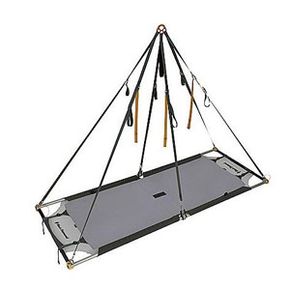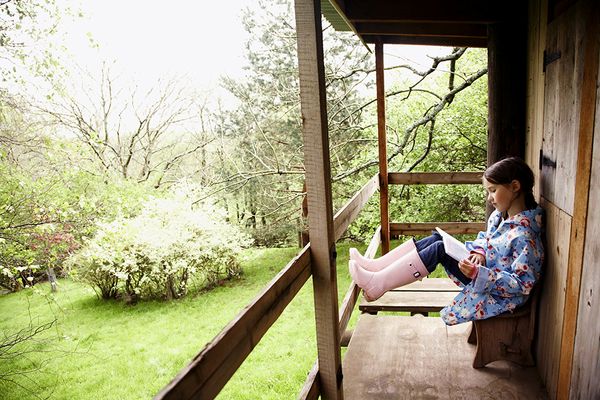Rock climbers like to live on the edge -- and sleep on one, too. Sleeping on a rock ledge is standard practice for the serious rock climber on multiday excursions. But when no natural ledge is around, the next best thing is to bring your own. Portable ledges, known as portaledges, are hanging cots that allow climbers to set up a bed or storm shelter for themselves during a climb.
Before portaledges came about, climbers determined to undertake an overnight journey with no natural ledges had to resort to hammocks. They used to require two anchors, however, and leaned against the rock wall. These early hammocks, which easily got soaked next to the rock and were painfully uncomfortable to sleep in, made overnight excursions difficult.
Advertisement
By the 1960s, crafty and unscrupulous climbers at Yosemite National Park would make off with cots from the camps. With these cots, made of canvas over a steel frame, they fashioned an early version of the portaledge and provided themselves a more comfortable bed than the hammock. In 1972, the first collapsible portaledge was introduced Lowe Albine Systems. In the 1980s, Mike Graham of Gramicci Products, Russ Walling of Fish Products and John Middendorf of A5 Adventures were all putting out their own portaledges. Middendorf in particular is credited with perfecting the design with a bomber portaledge (a secure portaledge strong enough to withstand rough storms).
The portaledge itself is a simple construction much like a cot, consisting of a frame of metal tubing (often aluminum). Cloth (usually nylon) is stretched over the tubing to form the bed. Only requiring a single anchor, portaledges are supported by four- or six-point suspensions. These straps spread from a central hanging point and are attached to the four corners and (for six-point suspensions) middle of the metal frame's sides. It ends up looking exactly like a hanging tent.
We'll discuss some important features and qualities to consider when selecting a portaledge.
Advertisement



